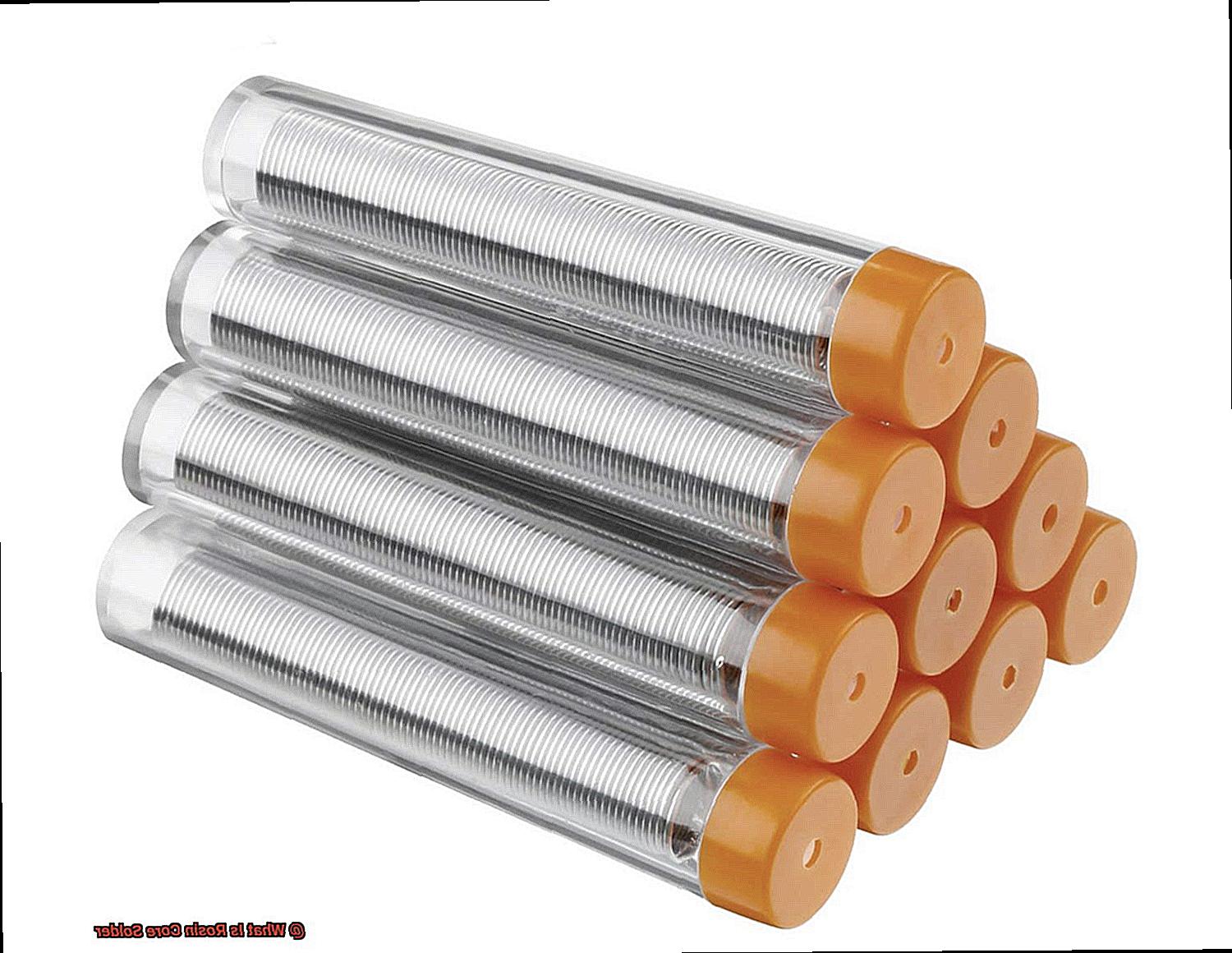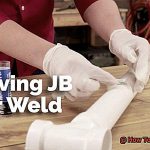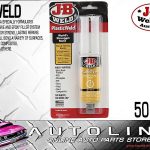Soldering is an essential technique that has been used for centuries to join pieces of metal together. It is a skill that is widely used in industries such as electronics, plumbing, and jewelry making. One type of solder that has stood the test of time in electronic applications is Rosin Core Solder.
Rosin Core Solder is a combination of a metal alloy and a flux. The flux, which is made of rosin, sits at the center of the solder wire. When heated, the rosin flux cleans the metal surface by removing any impurities, prevents oxidization, and helps to facilitate the flow of the molten metal alloy.
But why is Rosin Core Solder so popular? For starters, it creates stronger bonds between materials due to its ability to clean metal surfaces effectively. Secondly, it’s incredibly easy to use even for beginners and cost-effective nature has made it a go-to choice for many DIY enthusiasts.
In this article, we will dive deep into Rosin Core Solder’s properties and discuss the different types available. We will also explore how to properly use Rosin Core Solder for your projects so you can achieve optimal results every time. So buckle up and let’s get started.
Components of Rosin Core Solder
Contents
- 1 Components of Rosin Core Solder
- 2 Benefits of Using Rosin Core Solder
- 3 Steps of the Soldering Process with Rosin Core Solder
- 4 How to Choose the Right Type of Rosin Core Solder for Your Project
- 5 Common Mistakes to Avoid When Working with Rosin Core Solder
- 6 Tips for Working with Rosin Core Solder
- 7 Conclusion
Rosin core solder consists of two primary components: the solder itself and the rosin core. The solder is a fusion of metals such as tin and lead or tin and silver which are melted together to form a liquid metal used for joining two pieces of metal together.
The rosin core is made up of a small amount of rosin derived from pine trees. This resin helps in cleaning the metal surfaces being joined and prevents oxidation.
But how do these two elements work together to ensure a reliable and effective method of joining metals? Here’s an analogy to help you understand:
Imagine that the solder is like glue in a craft project, while the rosin core is like a cleaning solution. Glue binds two pieces of paper together, while the cleaning solution removes any dirt or impurities on the surface of the paper to ensure a strong bond.
Similarly, when heated, the rosin flux inside the rosin core solder melts and spreads out over the metal surfaces being joined. It cleanses the surfaces, removing any oxides or impurities that may be present, resulting in a strong, clean joint. As the solder cools down, it forms a smooth and even bond between the metal surfaces.
One significant advantage of rosin core solder is that it eliminates the need for additional flux during the soldering process. The rosin flux core melts and spreads out as the solder heats up, coating the surfaces to be joined and removing any oxidation or other contaminants present.
In addition to these two main components, other elements may be present in rosin core solder depending on the product being used. Some types may contain flux which helps to further clean metal surfaces being joined and promote solder flow. Other types may have additional metals or alloys that can affect joint strength and properties.
Overall, rosin core solder is an easy-to-use solution for joining metal surfaces in electronic and electrical work.
Benefits of Using Rosin Core Solder
Rosin core solder is incredibly user-friendly. It melts smoothly and effortlessly, making it an excellent option for both beginners and experienced welders. Plus, it produces less splatter than other types of solder, which means less clean-up work after welding.
But that’s not all. Rosin core solder is also highly reliable, creating strong and durable bonds that can withstand a variety of stresses and strains. This makes it ideal for use in electronics, where a secure bond is essential for proper function.
In addition to its ease of use and reliability, rosin core solder is also incredibly versatile. It can be used on a variety of materials, including copper, brass, and aluminum. This makes it the perfect choice for a wide range of welding projects.
And let’s not forget about affordability. Rosin core solder is easily accessible at most hardware stores and online retailers at an affordable price point. This makes it an accessible option for both professionals and hobbyists alike.
Steps of the Soldering Process with Rosin Core Solder
Soldering is the key to joining metal pieces together, and rosin core solder is a popular type of solder that helps create a strong bond. If you’re new to the process, don’t worry. We’ve got you covered with these simple steps.
First things first, you need to prepare the metal surfaces that will be joined. Think of it like getting a canvas ready before painting on it. Use a wire brush or sandpaper to remove any dirt, rust, or oxide layers. This ensures that the solder can bond properly and create a strong joint.
Now, it’s time to apply heat to the metal pieces using a soldering iron or torch. Like a chef carefully applying heat to cook a delicious meal, you need to apply heat at the right temperature to melt the solder but not so hot that it damages the metal being joined.
Once the metal surfaces have been heated, you can apply the rosin core solder to the joint. This is like adding colors to your painting. The rosin core helps to clean the metal surfaces being joined and improves the flow of the solder. Apply a small amount of solder and watch as it melts and flows into the joint with ease.
The fourth step is crucial: allow the joint to cool down and solidify. This is like letting your painting dry before adding more layers. Don’t move or disturb the joint while it cools down, as this can cause it to become weak or break.
Finally, inspect the joint for any imperfections or defects. If you find any, simply reheat and reapply solder until you achieve a strong and reliable joint. This is like adding final touches to your painting before it’s ready for display.
How to Choose the Right Type of Rosin Core Solder for Your Project
Before you start, it’s important to choose the right type of rosin core solder. With so many options available, it can be overwhelming to know which one to select. Here are five key factors to consider when choosing the perfect rosin core solder for your project:

Wire Size
The size of the solder wire is crucial in creating a strong bond between components. Thicker wires are best for larger projects or thicker materials, while thinner wires are more suitable for small, delicate work. Choosing the right wire size will ensure that you have enough material to work with and a steady hand when soldering.
Metal Type

Different metals require specific types of solder with particular melting points. Copper, brass, and aluminum are the most commonly used metals in soldering projects. Make sure to choose a solder with a lower melting point if you are working with copper and a higher melting point if you are working with aluminum.
Flux Content
Flux is like the superhero in the soldering process. It removes oxidation from metal surfaces, preparing them for a strong and clean bond between components. Look for rosin core solder with higher flux content to ensure a more efficient and cleaner soldering process.
Lead Content
Traditional rosin core solders contain lead, which can cause health problems if ingested or inhaled. Opt for lead-free options that are safer for both users and the environment. By choosing a lead-free option, you can enjoy your project without worrying about any harmful effects.
Melting Point
Different types of solder have varying melting points. Choosing the right one for your project is essential to avoid damaging surrounding materials or creating an unstable bond between components. Be sure to select a solder that has a melting point that matches the needs of your project.
So, choosing the right type of rosin core solder is crucial for any soldering project. By considering wire size, metal type, flux content, lead content, and melting point, you can ensure that your project is successful and long-lasting. So go ahead and unleash your creativity with confidence.
Common Mistakes to Avoid When Working with Rosin Core Solder
The first mistake to avoid is using the wrong soldering iron or tip. Choosing the right size and temperature can make all the difference in achieving a strong and durable bond. It’s like choosing the right tool for the job – using the wrong one can cause damage to your project.
Another mistake beginners make is neglecting to clean and prepare surfaces before soldering. Just like painting a wall, you need to remove any dirt, grease, or corrosion from the surfaces to be joined. Skipping this step can result in weak joints that won’t stand up over time.
Overheating is another mistake to avoid when working with Rosin Core Solder. Too much heat can cause irreparable damage to your components or wire, especially if they’re sensitive to heat. The key is to apply enough heat to melt the solder without causing any harm.
Lastly, using too much or too little solder is another common error. Using too little results in weak joints, while using too much creates messy and potentially damaging connections. It’s essential to find the right balance between applying enough heat and enough solder.
By avoiding these common mistakes, you can improve your soldering skills and create stronger connections between wires and components. Don’t be afraid to experiment and practice – soon enough, you’ll be a pro at working with Rosin Core Solder.
Tips for Working with Rosin Core Solder
Rosin core solder is a popular choice for electronics and electrical work because of its ability to bond metal surfaces effectively. However, it can be tricky to work with if you’re not familiar with the right techniques. Here are five tips that will help you master the art of working with rosin core solder.
Choose the Right Type of Rosin Core Solder
Different types of rosin core solder have varying melting points and diameters, so it’s important to choose one that’s appropriate for your specific needs. For example, if you’re working with delicate electronic components, you may need a finer gauge solder with a lower melting point.
Use a Soldering Iron with Adjustable Temperature Control
Controlling the temperature is crucial when working with rosin core solder. Using a soldering iron with adjustable temperature control allows you to set the heat to the optimal level for the type of solder you’re using and the specific components you’re working with.
Clean Your Surfaces Thoroughly
Before applying rosin core solder, make sure that the metal surfaces you’re working with are clean and free from any dirt, debris, or oxidation. You can use a cleaning solution or abrasive material to achieve this. This will ensure that the solder bonds effectively and creates a strong connection.
Use Proper Technique When Applying Solder
When applying rosin core solder, it’s crucial to use the correct technique. This means heating the component and surface with the soldering iron before applying the solder, and then applying just enough solder to create a strong bond without creating excess buildup or dripping.
Inspect Your Work After Completion
After completing the soldering process, inspect your work thoroughly to ensure that all connections are secure and free from any defects or cold joints. You can do this visually or use a multimeter tool to test for continuity. This final step will give you peace of mind knowing that your project is safe and functioning correctly.
By following these tips, you can successfully work with rosin core solder and create strong bonds between metal surfaces in your electrical and electronics projects. Remember, practice makes perfect, so don’t be afraid to experiment and learn from your mistakes.
xMpwOOmTHMo” >
Conclusion
In conclusion, Rosin Core Solder is a widely used technique for connecting metal surfaces in electronic and electrical work. It consists of two essential components: the solder and the rosin core.
The rosin flux found inside the solder wire cleanses the surfaces being joined, removing any impurities or oxides present, resulting in a strong and clean bond.
One of the significant advantages of using rosin core solder is that it eliminates the need for additional flux during welding.
Rosin Core Solder is an easy-to-use and versatile option that produces less splatter than other types of solder. It creates durable bonds capable of withstanding various stresses and strains, making it an excellent choice for electronics.
When selecting the perfect rosin core solder for your project, consider factors such as wire size, metal type, flux content, lead content, and melting point to ensure success and longevity.
While working with Rosin Core Solder, avoid common mistakes such as using the wrong soldering iron or tip or neglecting to clean surfaces before welding.
Instead, choose the appropriate type of Rosin Core Solder for your specific needs, use a soldering iron with adjustable temperature control and thoroughly clean surfaces before applying proper technique when applying solder.





